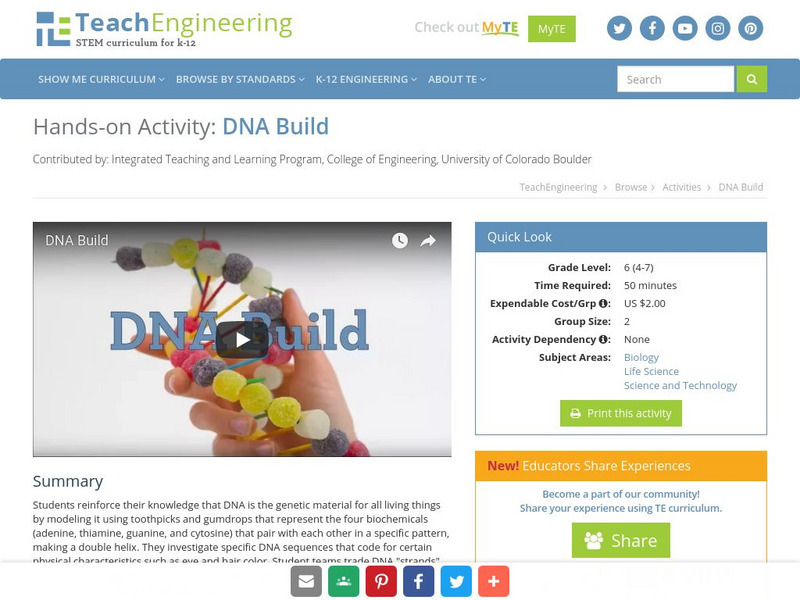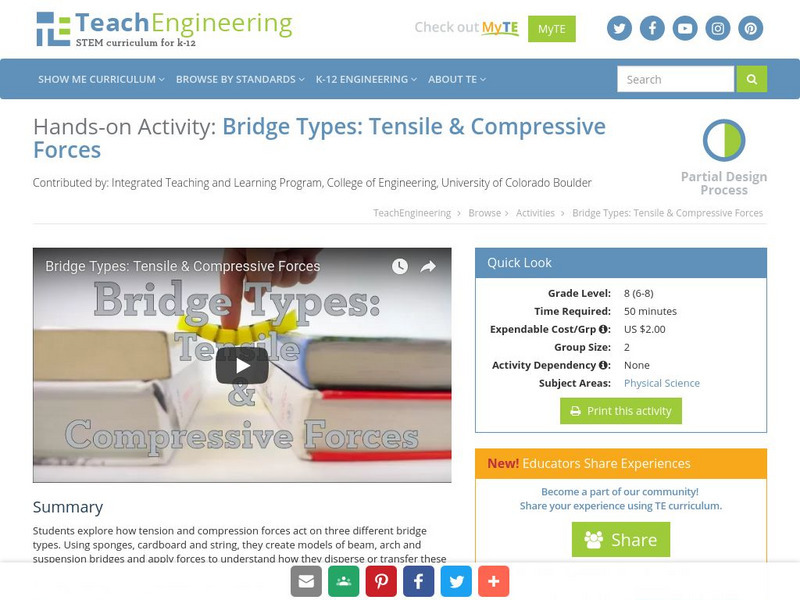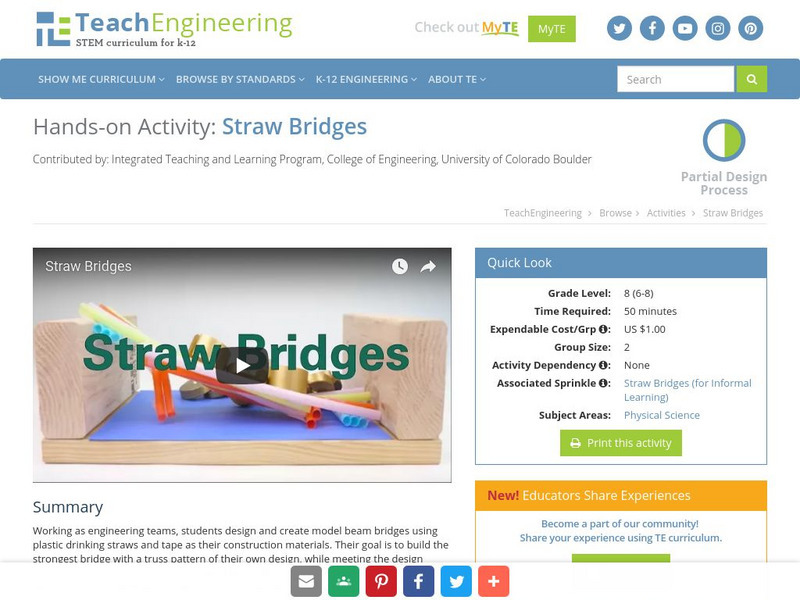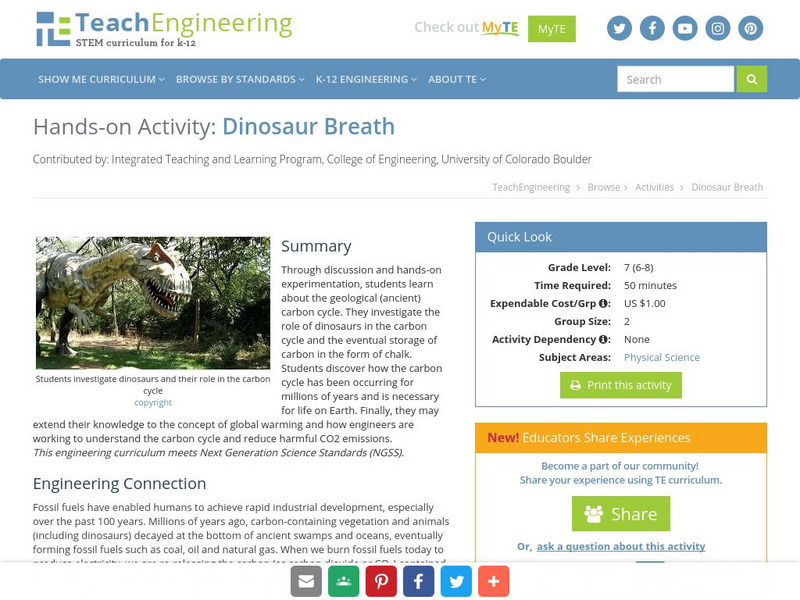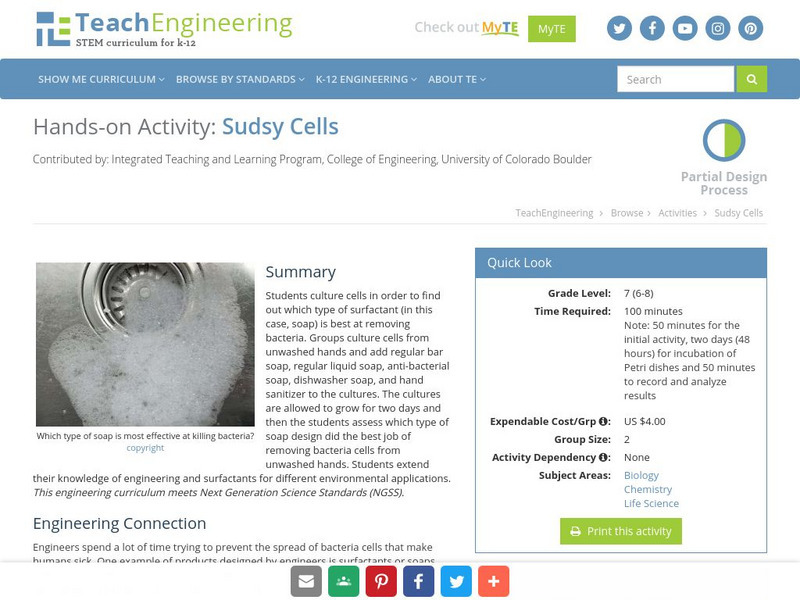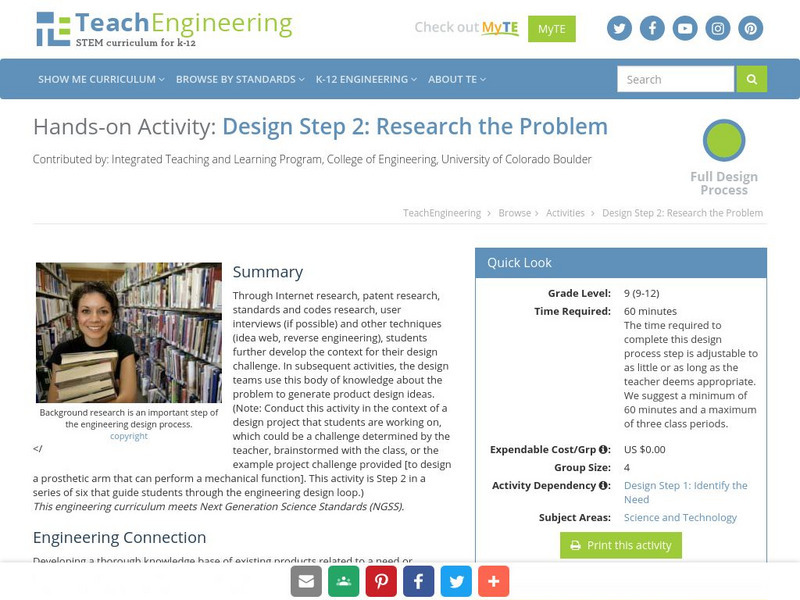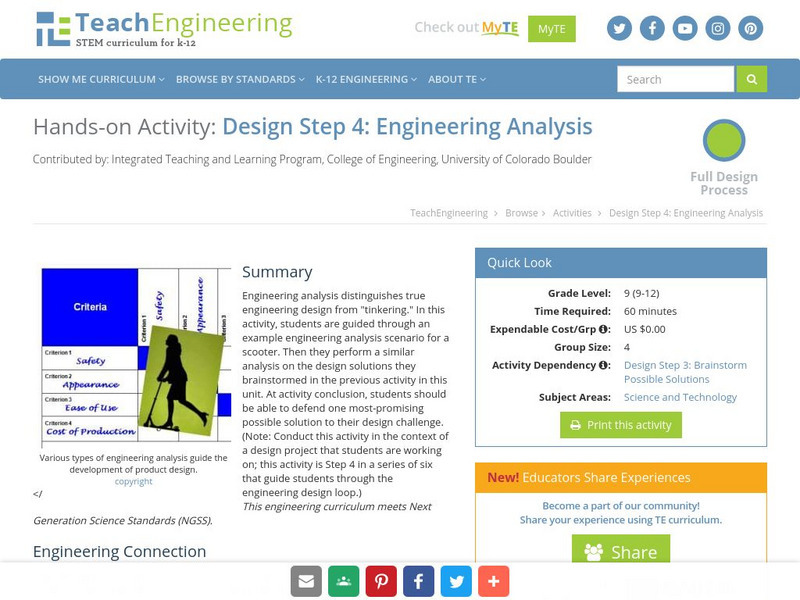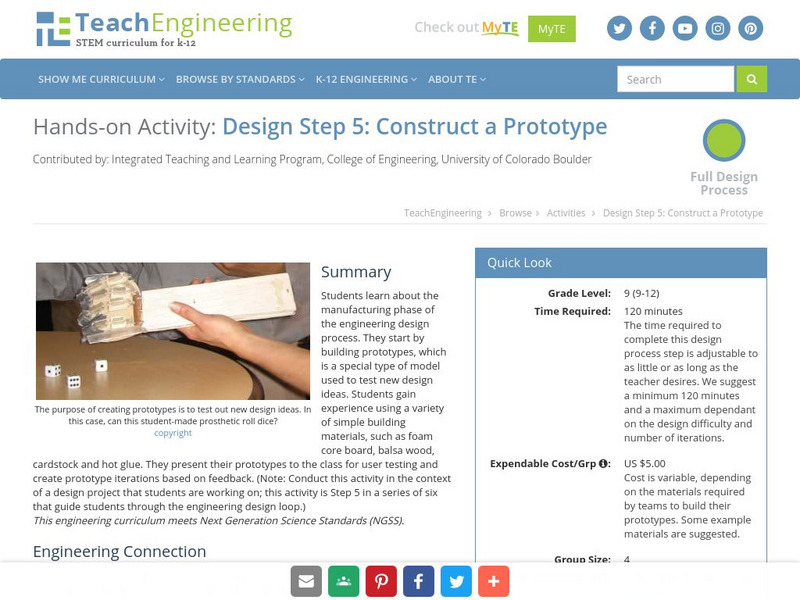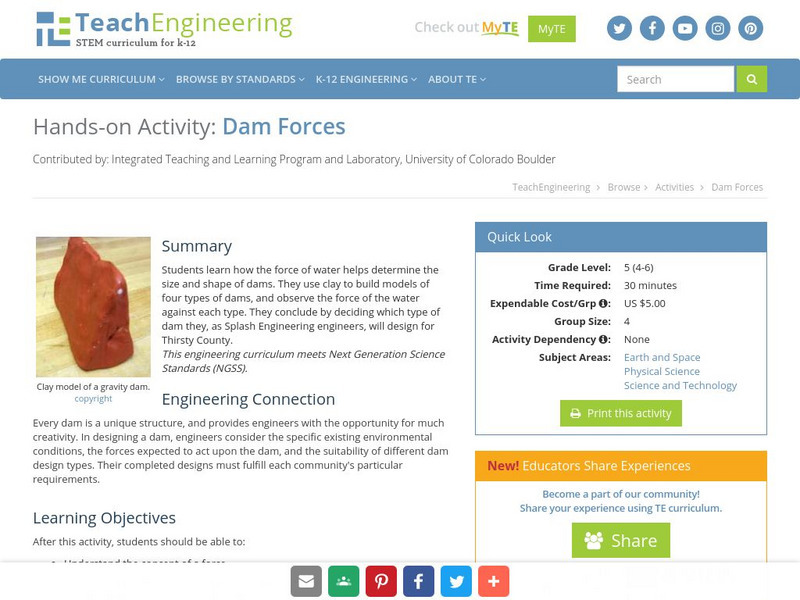TeachEngineering
Teach Engineering: Dna Build
Students reinforce their knowledge that DNA is the genetic material for all living things by modeling it using toothpicks and gumdrops that represent the four biochemicals (adenine, thiamine, guanine, and cytosine) that pair with each...
TeachEngineering
Teach Engineering: Repairing Broken Bones
Students learn about how biomedical engineers aid doctors in repairing severely broken bones. They learn about using pins, plates, rods and screws to repair fractures. They do this by designing, creating and testing their own prototype...
TeachEngineering
Teach Engineering: Bridge Types: Tensile & Compressive Forces
Students explore how tension and compression forces act on three different bridge types. Using sponges, cardboard and string, they create models of beam, arch and suspension bridges and apply forces to understand how they disperse or...
TeachEngineering
Teach Engineering: Straw Bridges
Working as engineering teams, students design and create model beam bridges using plastic drinking straws and tape as their construction materials. Their goal is to build the strongest bridge with a truss pattern of their own design,...
TeachEngineering
Teach Engineering: Load It Up!
Students take a hands-on look at the design of bridge piers (columns). First they brainstorm types of loads that might affect a Colorado bridge. Then they determine the maximum possible load for that scenario, and calculate the...
TeachEngineering
Teach Engineering: Shallow & Deep Foundations
Students investigate the critical nature of foundations as they learn differences between shallow and deep foundations, including the concepts of bearing pressure and settlement. Using models representing a shallow foundation and a deep...
TeachEngineering
Teach Engineering: Breaking the Mold
In this math activity, students conduct a strength test using modeling clay, creating their own stress vs. strain graphs, which they compare to typical steel and concrete graphs. They learn the difference between brittle and ductile...
TeachEngineering
Teach Engineering: Dinosaur Breath
Through discussion and hands-on experimentation, students learn about the geological (ancient) carbon cycle. They investigate the role of dinosaurs in the carbon cycle and the eventual storage of carbon in the form of chalk. Students...
TeachEngineering
Teach Engineering: Right on Target: Catapult Game
Students experience the engineering design process as they design and build accurate and precise catapults using common materials. They use their catapults to participate in a game in which they launch Ping-Pong balls to attempt to hit...
TeachEngineering
Teach Engineering: Sudsy Cells
Students culture cells in order to find out which type of surfactant (in this case, soap) is best at removing bacteria. Groups culture cells from unwashed hands and add regular bar soap, regular liquid soap, anti-bacterial soap,...
TeachEngineering
Teach Engineering: Breathing Cells
Students use a simple pH indicator to measure how much CO2 is produced during respiration, at rest and after exercising. They begin by comparing some common household solutions in order to determine the color change of the indicator....
TeachEngineering
Teach Engineering: Glowing Flowers
Student teams learn about engineering design of green fluorescent proteins (GFPs) and their use in medical research, including stem cell research. They simulate the use of GFPs by adding fluorescent dye to water and letting a flower or...
TeachEngineering
Teach Engineering: Optimize! Cleaner Energy Options for Rural China
Students work in engineering teams to optimize cleaner energy solutions for cooking and heating in rural China. They choose between various options for heating, cooking, hot water, and lights and other electricity, balancing between the...
TeachEngineering
Teach Engineering: Engineer a Coin Sorter
Students learn about the engineering design process and how it is used to engineer products for everyday use. Students individually brainstorm solutions for sorting coins and draw at least two design ideas. They work in small groups to...
TeachEngineering
Teach Engineering: Convertible Shoes: Function, Fashion and Design
Students teams design and build shoe prototypes that convert between high heels and athletic shoes. They apply their knowledge about the mechanics of walking and running as well as shoe design (as learned in the associated lesson) to...
TeachEngineering
Teach Engineering: High Arches, Low Arches
A main concern of shoe engineers is creating shoes that provide the right amount of arch support to prevent (or fix) common gait misalignments that lead to injury. During this activity, students look at their own footprints and determine...
TeachEngineering
Teach Engineering: Design Step 1: Identify the Need
Students practice the initial steps involved in an engineering design challenge. They begin by reviewing the steps of the engineering design loop and discussing the client need for the project. Next, they identify a relevant context,...
TeachEngineering
Teach Engineering: Design Step 2: Research the Problem
Through Internet research, patent research, standards and codes research, user interviews (if possible) and other techniques (idea web, reverse engineering), students further develop the context for their design challenge. In subsequent...
TeachEngineering
Teach Engineering: Design Step 3: Brainstorm Possible Solutions
Brainstorming is a team creativity activity that helps generate a large number of potential solutions to a problem. In this activity, students participate in a group brainstorming activity to generate possible solutions to their...
TeachEngineering
Teach Engineering: Design Step 4: Engineering Analysis
Engineering analysis distinguishes true engineering design from "tinkering." In this activity, students are guided through an example engineering analysis scenario for a scooter. Then they perform a similar analysis on the design...
TeachEngineering
Teach Engineering: Design Steps 5 and 6: Create and Test a Prototype
Students learn about the importance of creating and testing prototypes during the engineering design process. They start by building prototypes, which is a special type of model used to test new design ideas. Students gain experience...
TeachEngineering
Teach Engineering: Design Step 7: Improve and Redesign/manufacture a Product
As young scholars learn more about the manufacturing process, they use what they learned from testing their designs in the previous activity to continue to improve and redesign. Students also have the opportunity to manufacture their...
TeachEngineering
Teach Engineering: How Much Water Do You Use?
Students keep track of their own water usage for one week, gaining an understanding of how much water is used for various everyday activities. They relate their own water usages to the average residents of imaginary Thirsty County, and...
TeachEngineering
Teach Engineering: Dam Forces
Students learn how the force of water helps determine the size and shape of dams. They use clay to build models of four types of dams, and observe the force of the water against each type. They conclude by deciding which type of dam...


